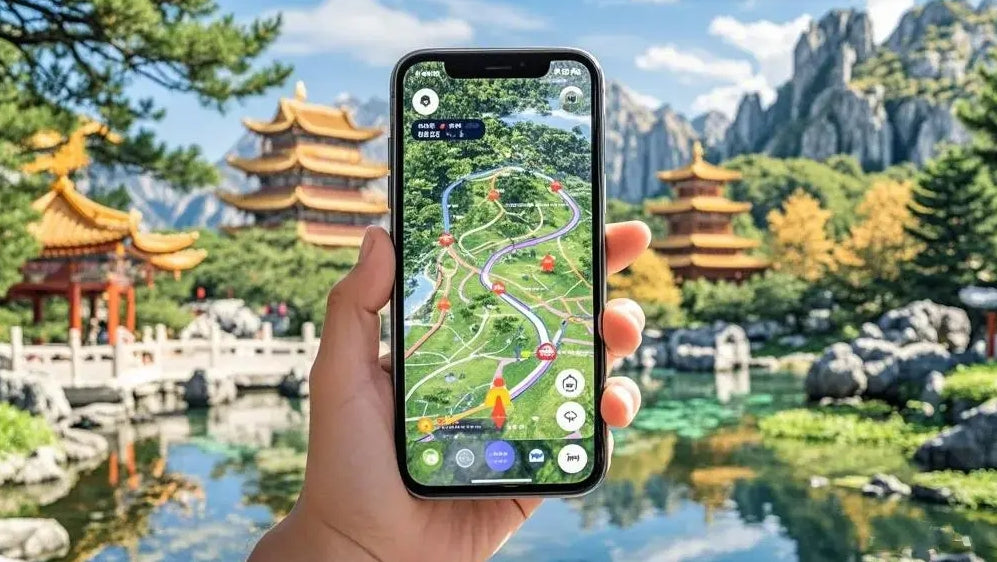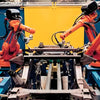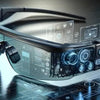ToF Technology Transforms Cultural Tourism with Smart Experiences

As the world embraces a new wave of digital transformation, the cultural tourism industry is undergoing a radical evolution. Tourist attractions are no longer limited to passive sightseeing; they are actively integrating cutting-edge technologies to deliver immersive experiences and optimize operations. Among these, Time-of-Flight (ToF) technology—a 3D sensing method that captures depth information in real time—is emerging as a game-changer in the development of smart cultural tourism.
Rising Demand for Digital Transformation in Cultural Tourism
Modern travelers seek personalized, interactive, and immersive experiences. Conventional solutions like static guides or fixed routes are no longer sufficient. Scenic spots often face challenges such as overcrowding, uneven service delivery, and safety concerns during peak seasons. As a result, there's an urgent need to introduce smart perception and automation technologies to build integrated systems for:
-
Smart navigation and interactive guiding
-
Real-time crowd management and scheduling
-
Immersive, contactless user interaction
This is where 3D ToF cameras come into play.
What Is a 3D ToF Camera?
A 3D ToF (Time-of-Flight) camera uses infrared light pulses to measure the time it takes for light to reflect off objects and return to the sensor. By calculating these time delays, it creates accurate, real-time 3D depth maps of its surroundings.
-
Millimeter-level depth precision for detailed spatial awareness
-
Low latency and high frame rates for real-time responsiveness
-
Strong anti-interference performance, even in complex or variable lighting environments
These features have made ToF cameras essential in a variety of sectors, including gesture control, robotics, autonomous navigation, and healthcare. Today, they are also transforming the cultural tourism industry—enabling smart, immersive visitor experiences and data-driven, intelligent scenic area operations.
Smart Tours and Real-Time Heatmaps: Enhancing On-Site Experiences
Smart Tour Guidance Systems
ToF sensors capture the spatial positioning and motion of visitors, allowing attractions like museums or exhibition halls to recognize presence, gestures, and interest levels in real time. When paired with AI algorithms and multimedia systems, they enable “play-on-arrival, pause-on-leave” interactive storytelling.
For instance, in museums, ToF cameras detect when a visitor approaches an exhibit and determine their gaze direction and dwell time. The system then adapts content dynamically—offering brief intros, in-depth narratives, or even video formats—to suit user behavior. This personalized engagement far surpasses static audio guides.
In outdoor parks, ToF systems combined with GPS or mobile apps support smart route planning, check-in tasks, and augmented reality (AR) experiences, turning casual walks into interactive journeys.
Real-Time Crowd Heatmaps and Flow Optimization
Leveraging the advanced real-time 3D sensing capabilities of ToF technology, managers can create highly accurate and dynamic crowd density heatmaps that visually represent visitor distribution across a venue. These heatmaps use color gradients to highlight areas of high concentration and low activity, enabling quick identification of congestion points and underutilized spaces.
In addition to mapping crowd density, ToF sensors continuously track foot traffic patterns and visitor dwell behavior, providing valuable insights into how people move through and interact with different areas. This data helps optimize visitor flow by enabling intelligent scheduling, targeted resource allocation, and dynamic route adjustments to minimize bottlenecks and enhance overall visitor comfort.
When combined with SLAM (Simultaneous Localization and Mapping) technology, mobile robots equipped with ToF cameras can autonomously navigate complex environments in real time. These robots detect crowd formations and intelligently guide visitors away from congested zones, improving safety and the touring experience. Furthermore, ToF systems analyze individual behaviors such as running, lingering too long, or group gatherings, allowing for early identification of potential safety risks or security concerns.
By providing continuous, data-driven feedback on crowd dynamics and visitor behavior, ToF-powered solutions empower scenic area managers to make informed decisions that enhance safety, engagement, and operational efficiency. This integration of advanced sensing and autonomous guidance marks a significant step forward in smart cultural tourism management.
Immersive Interaction: The Era of Contactless and Naked-Eye 3D
Naked-Eye 3D Displays & Gesture Interaction
By recognizing full-body posture and gestures in real time, ToF-powered displays allow touch-free interaction with digital exhibits. Visitors can:
-
Zoom, rotate, or switch virtual artifacts with simple gestures
-
Explore timelines, 3D reconstructions, or virtual environments
-
Interact without controllers, headsets, or physical contact
This brings exhibits to life—especially in historical, scientific, or children’s museums—creating a participatory experience that is not only engaging but also hygienic and accessible.
Virtual Guides & AI-Powered Customer Service
ToF cameras are revolutionizing visitor interaction by enabling highly lifelike AI-powered virtual guides that offer personalized and intuitive assistance. These advanced systems utilize precise 3D depth sensing to recognize subtle human gestures—such as waving, pointing, or nodding—as well as nuanced facial expressions and emotions like confusion, surprise, or happiness. This detailed understanding allows the AI guides to respond with empathy and accuracy, creating a warm and engaging visitor experience.
Equipped with sophisticated natural language processing (NLP) capabilities, these virtual assistants can handle multi-turn conversations, understand diverse visitor queries, and provide clear, natural responses in multiple languages. Whether it’s helping visitors with route planning, recommending exhibits based on individual interests and real-time location, or answering frequently asked questions, the AI guides deliver seamless and efficient support throughout the cultural site.
Moreover, these AI systems continuously learn from visitor interactions and feedback, enabling them to refine their responses, improve service quality, and adapt to evolving visitor needs. Beyond everyday assistance, virtual guides play a critical role in emergency management by detecting distress signals or unusual behaviors and promptly guiding visitors to designated safety zones.
By combining ToF’s precise spatial sensing with AI-driven customer service, cultural tourism destinations can offer a next-level visitor experience that is both intelligent and compassionate, enhancing satisfaction, safety, and operational effectiveness.
Application Cases: TOF in Action
Museum: Automated Multilingual Narration
A provincial museum installed 3D ToF cameras and semantic recognition modules to build a proximity-triggered narration system. Without any manual interaction, visitors are greeted with location-based, multilingual audio and synchronized multimedia displays, dramatically improving engagement and accessibility—especially for international tourists.
National Scenic Spot: AI Customer Service System
At a 5A-level tourist site, an AI service system based on ToF vision and machine learning offers:
-
Gesture-based interaction
-
Real-time navigation assistance
-
Personalized attraction recommendations
It even detects emergencies, alerts staff, and activates safety protocols—all contributing to safer, more efficient, and warmer human-machine collaboration in tourism services.
Data Value: Driving Operational Excellence with Real-Time Insights
ToF isn’t just about visitor experience—it’s also a powerful tool for operational intelligence.
Key Data Applications:
-
Analyze foot traffic patterns and engagement levels
-
Detect underutilized areas or high-traffic bottlenecks
-
Optimize exhibit layout, staff deployment, and facility usage
-
Predict peak hours for better scheduling and staffing
Advanced ToF systems also enable anomaly detection, recognizing falls, running, or dangerous gatherings to preemptively manage risks. These insights form the basis for digital twin platforms, offering 3D virtual replicas of scenic areas for simulation, monitoring, and strategic planning.
Conclusion: TOF Technology Leads the Future of Smart Cultural Tourism
As an advanced form of 3D imaging, Time-of-Flight technology is redefining cultural tourism. From intelligent guides and crowd management to immersive displays and AI-powered services, ToF creates a seamless, safe, and interactive experience for every visitor.
With ongoing innovations in RGB-D sensing, visual SLAM, and edge AI, ToF will remain central to building more responsive, efficient, and personalized tourism ecosystems—ushering in a new era of intelligent cultural exploration.
Robosense 32-line 3D LiDAR sensor RS-Helios-5515 unmanned ranging navigation obstacle avoidance V2R RS-Helios-1615 Laser radar
After-sales Support:
Our professional technical team specializing in 3D camera ranging is ready to assist you at any time. Whether you encounter any issues with your TOF camera after purchase or need clarification on TOF technology, feel free to contact us anytime. We are committed to providing high-quality technical after-sales service and user experience, ensuring your peace of mind in both shopping and using our products.







